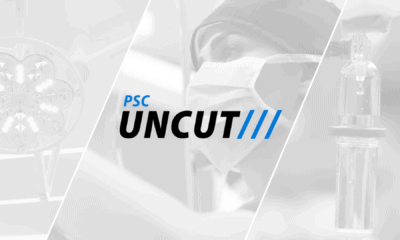We’ve all seen images of celebrities that have clearly gone too far with plastic surgery. Meg Ryan, Kenny Rogers, and the late Joan Rivers all come to mind. The over-puffed lips, frozen forehead and distorted/pulled face seem to have unfortunately become the norm at most award shows these days. Although every individual has the right to rock his or her own aesthetic, when it is up to the plastic surgeon to say, “enough is enough”? Our panel of board certified surgeons discuss this difficult conversation and the importance of saying, “no”.
Understanding a Procedure’s Limits
Dr. Craig Colville of Toledo, OH thinks that, “it’s OK to say no.” In fact, he finds it really easy to say no in situations where the patient is asking for something where their expectations can never be met. For Dr. Caroline Glicksman of Sea Girt, NJ, she thinks it’s important for patients to understand, “there’s a difference between non-surgical procedures that we do in our office, and surgical.”
Sometimes, the surgeon needs to tell the patient – especially one in their late 50’s to early 60’s – that, “it’s time to transition.” Non-surgical techniques, such as fillers, Botox, creams and lasers, can only do so much. We all reach a point where the skin on the face becomes too lax. Adding volume and/or addressing skin tone and texture will not fix loose skin. When you try is when the face begins to look distorted and fake.
A Surgeon’s Talent and Expertise Is Paramount
Dr. Colville doesn’t have any problem telling a patient, “that’s enough filler for awhile”. Oftentimes, he’ll suggest taking a year off from injectables to let the face return to normal. Most of the time, a patient has been with him for awhile so there is a level of trust however, “it’s important to take their picture,” not just as a point of reference, but so that she can see what she really looks like. Glicksman believes that there are great products out there in terms of fillers, but sometimes, great products are put in poorly. You see this beautiful blonde and she turns around and she has huge fish lips. Obviously, they weren’t done correctly. Glicksman will often make a new patient stop using a product for 6 months so that the incorrect work can fade before she then injects the site properly.
When asked whether or not they had a fear that if you don’t do it someone else who will, both of our experts answered no. Neither surgeon would want to be attached to bad work. “Above all else, do no harm,” states Glicksman. If you lose a patient by saying no then that’s OK. She doesn’t want to be part of something that goes too far: “You really need to do the right thing for that patient.”











Facebook
Twitter
Instagram
YouTube
RSS